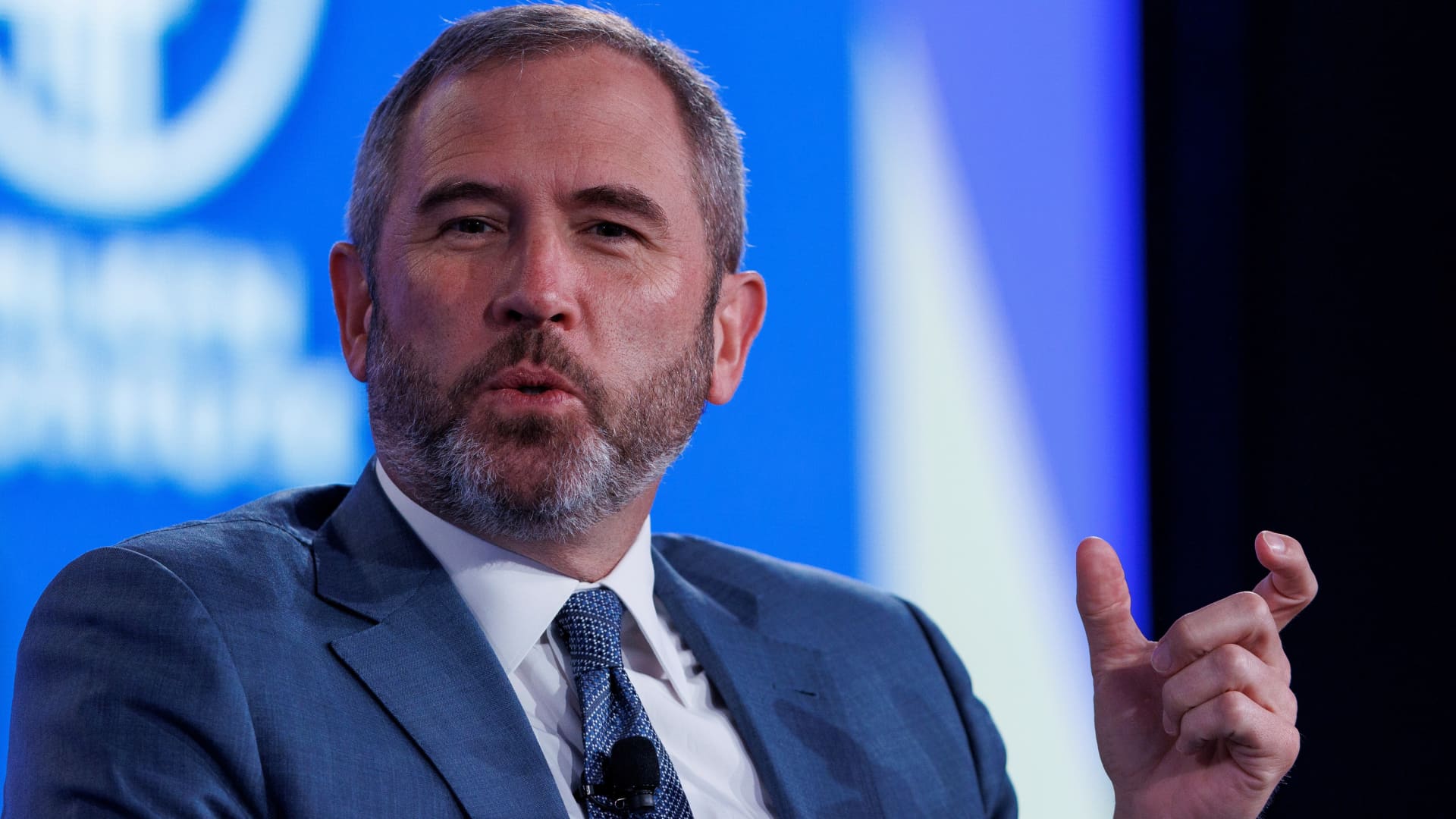Brad Garlinghouse, CEO of Ripple, speaks at the 2022 Milken Institute Global Conference in Beverly Hills, California, U.S., May 4, 2022.
Mike Blake | Reuters
The CEO of blockchain startup Ripple sees the combined market capitalization of the cryptocurrency market topping $5 trillion this year.
Ripple’s Brad Garlinghouse told CNBC that he expects the entire value of the crypto market to double, citing macro factors including the arrival of the first U.S. spot bitcoin exchange-traded fund (ETFs), as well as the upcoming so-called bitcoin “halving.”
“I’ve been around this industry for a long time, and I’ve seen these trends come and go,” Garlinghouse told CNBC. “I’m very optimistic. I think the macro trends, the big picture things like the ETFs, they’re driving for the first time real institutional money.”
“You’re seeing that drives demand, and at the same time demand is increasing, supply is decreasing,” Garlinghouse said. “That doesn’t take an economics major to tell you what happens when supply contracts and demand expands.”
The first U.S. spot bitcoin ETFs were approved on Jan. 10 by the U.S. Securities and Exchange Commission. They trade on U.S. stock exchanges and allow institutions and retail investors to gain exposure to bitcoin without directly owning the underlying asset.
The bitcoin halving is a technical event that takes place roughly every four years in bitcoin’s history. It halves the total mining reward to bitcoin miners, which are volunteers on the bitcoin network that use high-powered computers to verify transactions and mint new tokens.
The last such event took place in 2020, and the next one is slated to happen later this month.
“The overall market cap of the crypto industry … is easily predicted to to double by the end of this year … [as it’s] impacted by all of these macro factors,” Garlinghouse said.
The total crypto market capitalization was roughly $2.6 trillion as of April 4. If the market were to double, that would imply a new total crypto market cap of $5.2 trillion.
Bitcoin has risen more than 140% in the last 12 months.
It hit a record high above $73,000 on March 13, according to CoinGecko data. It has since fallen well below the $70,000 level, however.
The world’s digital currency has been the main token driving gains for the broader market.
Bitcoin accounts for about 49% of the entire crypto market, with a market capitalization of $1.3 trillion as of April 1.
Positive signs on U.S. crypto regulation
One of the other factors that Garlinghouse sees pushing the crypto market to new highs is the possibility of positive regulatory momentum in the United States.
This year being an election year, crypto hopefuls are optimistic that the next administration will be more accommodating to the crypto industry with its policy focus.
The SEC under Chair Gary Gensler has been aggressive in its enforcement on crypto companies, including Ripple itself.
The SEC targeted Ripple with a securities lawsuit alleging it illegally sold XRP, a cryptocurrency Ripple is closely associated with, in unregistered securities deals. Ripple denies the claims and is fighting the suit.
“One of the things actually I’ll say on the macro tailwinds for the industry: I think we will get more clarity in the United States,” Garlinghouse said.
“The U.S. is still the largest economy in the world, and it’s unfortunately been one of the more hostile crypto markets. And I think that’s going to start to change, also.”
Garlinghouse isnt the only crypto bull predicting outsized gains for the crypto market this year.
Marshall Beard, chief operating officer of U.S. crypto exchange Gemini, recently told CNBC at a crypto conference in London that he expects the bitcoin price to rise to $150,000 later this year.
“Everything went up so fast already this year, there’s just a lot of activity, a lot of adoption, new regulation, ETFs, the halving, miners needing to get out,” Beard told CNBC.
“You’re going to see violent moves up and down until that new all-time high, which I think will be $150,000,” Beard added. “It probably happens this year. I think it moves so fast … and I think that momentum, the supply shock, it moves crazy quickly.”
WATCH: Bitcoin serves different purposes for different people, says Anthony Pompliano

 Economics1 week ago
Economics1 week ago
 Blog Post1 week ago
Blog Post1 week ago
 Personal Finance1 week ago
Personal Finance1 week ago
 Accounting7 days ago
Accounting7 days ago
 Personal Finance6 days ago
Personal Finance6 days ago
 Personal Finance6 days ago
Personal Finance6 days ago
 Economics6 days ago
Economics6 days ago
 Finance6 days ago
Finance6 days ago











